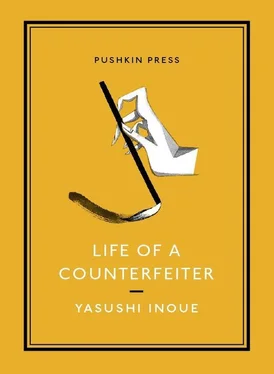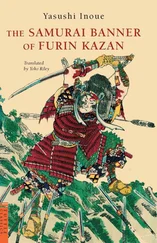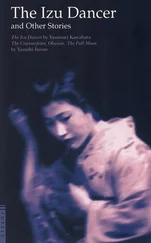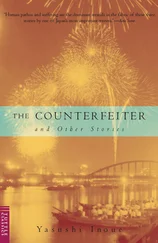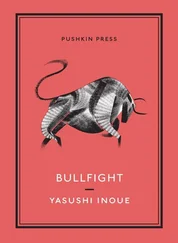Work progressed smoothly enough in July: I went through nearly ten collections of Keigaku’s occasional essays and travel writings and listed as many of his trips as I could identify, then added in his major works by year of composition — and with that I was able to complete a timeline of sorts, however slapdash. In August, relying on my old notes and trying as much as possible to set out only trustworthy facts, avoiding any speculation, I finished the section of the biography covering from his childhood through his teenage years, then wrote of his apprenticeships with a series of Kyoto painters, including Katakura Issō and Yoshimizu Gahō; the submission of his first important work, Pleasures Lost , to the 1897 Exhibition for the Promotion of Painting, and the really quite extraordinary splash with which his career began when the painting received an award, marking him as a genius from the beginning; and then, finally, his unveiling, in quick succession, of the works now regarded as his early masterpieces, among them White Nights, The Old Fox, and A Thin Layer of Snow . After that, however, I suddenly found myself unable to write another word.
Here and there, in the course of describing Keigaku’s glorious beginnings as a young artist, I had been transcribing sections from what was essentially the only holographic document to have survived, an unpublished diary from that period in his life that Ōnuki Takuhiko had handed me the first time I visited him in Kyoto after the war.
“I came across something unusual,” he had said. “I wonder if you might find it useful?”
The diary contained scattered notes about day-to-day events from the end of 1897 to the summer of 1899, all written out in spidery characters on handmade Japanese paper; it was a precious, absolutely unique record of Keigaku’s life during that period. Evidently the family had found it in a Chinese chest in the storehouse, mixed in with all sorts of other old papers, while they were preparing to evacuate.
The thing in this diary that most piqued my curiosity was the revelation that this brilliant, arrogant and haughty painter, who seemed never in his life to have possessed a true friend, had in fact been close to someone in those years — a man named Shinozaki. His name appeared three times. What was more, his was the only name in the diary’s pages that did not belong to a family member. One entry read, “Went to see Shinozaki in Kitano with my silver medal; we spent the night drinking and talking.” Judging from the context, this almost certainly occurred after Keigaku received the Special Award for Picture of a Peacock at the exhibition of the Kyoto Painting Association. Presumably he went to share his delight with his close friend, taking the medal with him, and the two had stayed up all night pouring each other cup after cup of sake; one can easily imagine that this must have been the happiest night in Keigaku’s young life. That he was able to share his joy with Shinozaki so completely, without holding back, suggests that they must have been very close indeed.
The next entry reads: “Shinozaki sent a sea bream to congratulate me. Went right away to see him in Shimotachiuri, but he was out. Left a note, enormous, on the door to his room.” Presumably Shinozaki had sent the sea bream because Keigaku had taken another prize at an exhibition or something like that; Keigaku, touched by this warm gesture, had immediately dashed off to Shinozaki’s house, or perhaps to the room he rented. We have no way of knowing what the “enormous” note Keigaku left “on the door to his room” might have said, but in all likelihood it was either a note explaining the reason for his visit or a poem in Chinese of the sort he often composed later in his life, spontaneously tossed off, expressing his gratitude for the gift. This was an extraordinarily reckless thing for Keigaku to do, but I found it fascinating — it seemed so perfectly to capture the proud confidence of a young, brilliant painter whose talents were only just being recognized. No date is given for this entry.
Shinozaki’s name appears for the last time in this sentence: “Shinozaki left Mt. Shō this morning, came to Kyoto.” This comes toward the end of the diary, in an entry dated August 3, 1899. The line has been written in on its own; it has no connection to what precedes or follows, and does not seem to have any particular meaning. And yet, the second I saw the two characters for Mt. Shō, an image rose up before me, perfectly clear, of that intimate friend of Keigaku’s, the man he called Shinozaki: all of a sudden, I realized that he was the counterfeiter Hara Hōsen.
I had some slight knowledge of Hōsen as a man who had produced counterfeits of Keigaku’s work and lived a dark, unhappy life, though until then I had half forgotten his existence. And yet, when it struck me that he must have been essentially the only close friend Keigaku ever had in his youth, I was struck by an emotion unlike anything I had ever felt, and that I don’t know how to describe.
Casting my thoughts back, I realized I had once heard that Hōsen had been adopted, and, although I had never been told his original surname, the name Shinozaki was, it occurred to me, very common in the small settlement along the Hino river, in the Chūgoku mountains, where Hōsen had grown up. There could be no doubt, as far as I was concerned, that the Shinozaki who appeared in the diary and Hara Hōsen were one and the same.
For the next two days, I left my work on the biography and did nothing but sit in the rattan chair on my south-facing veranda, staring at Mt. Amagi and the late-summer sun, suddenly so much weaker than before, glowing on its slopes. My thoughts were occupied, not by the figure of that brilliant painter Keigaku in the full glory of his youth, but by Hōsen’s checkered career — though obviously the little bits and pieces of knowledge I had concerning him were only then, for the first time, drawing together to form a single coherent thread, an image of a life. As I sat facing the mountain, a powerful urge came over me: I had to keep thinking about Hōsen. There was something in his life, it seemed, that I could not avoid thinking about — that I had, for his sake, to reflect upon.
*
I first encountered Hara Hōsen’s name in the autumn of 1943 when Ōnuki Takuhiko and I took a trip together, thinking we should go look at a number of Keigaku’s representative early works that remained scattered about in various towns on the Inland Sea, along the southern edges of Hyōgo and Okayama prefectures, owing to their proximity to Keigaku’s hometown.
We gave ourselves about five days and visited the houses of owners of Keigaku’s works in Akashi, Kakogawa, Takasago, Himeji, Shikama, Aioi, Wake and Saidaiji. Takuhiko had contacted someone at each house in advance to explain our motivation for coming; in most cases they welcomed us warmly, and we were able to see a number of paintings Keigaku had done in his twenties of which previously we had only heard.
We were kept quite busy getting on and off trains, stepping out onto the platforms of small stations in Harima and Bizen, where one could somehow intuit the nearness of the ocean and where the autumn sunlight splashed across the whitish, sandy soil characteristic of the region, and then making the rounds of the addresses I had copied out in my notebook, going from the house of one venerable or at least inordinately wealthy family to the next, each one of which had been a patron of Keigaku’s, so to speak, while he was alive. Sometimes our schedule allowed us to stay no more than an hour or two, and even had that not been the case Takuhiko was innately given to rushing about, so I found myself hurrying, indeed almost sprinting, down long roads enclosed by pines or streets bordered by endless mud walls, but it was late autumn and I didn’t sweat much at all — the weather was neither too hot nor too cold, ideal for a trip of this nature.
Читать дальше
